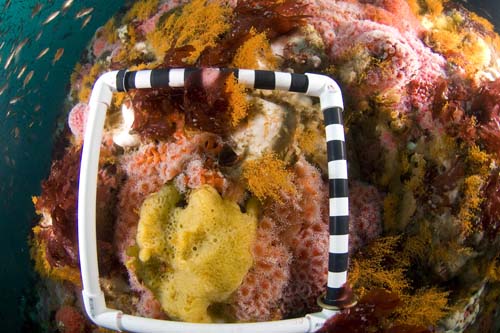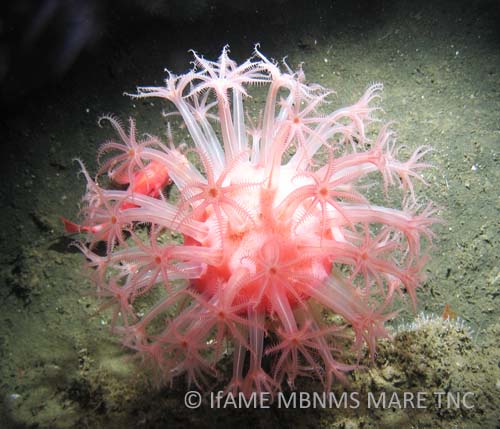The continental shelf is the gently dipping submerged margin of the continent that extends from the nearshore to the shelf break. Beyond the break (at a depth of approximately 200 meters, or 650 feet), the slope descends more steeply to the ocean floor. It can be subdivided according to depth, including:
- the intertidal (salt spray to extreme low water)
- shallow subtidal (0 to 30 meters)
- outer shelf (30 to 200 meters)
Throughout the three northern California sanctuaries, the habitats along the shelf vary greatly, from soft-bottom (sand, mud, silt and/or clay) to rocky (coarse gravel to boulders, caves, pinnacles and/or outcrops).
In the Greater Farallones, the continental shelf encompasses several notable features: large underwater sand dunes between the Farallon Islands and Point Reyes as well as a long rocky ridge that includes Hurst Shoal, Farallon Islands, Fanny Shoals, Rittenberg Bank and Noonday Rock.
Depth Zones Interactive Map
Basic depth zones within and near MBNMS are shown in the interactive map below, along with Sanctuary and California MPA boundaries. The continental shelf is desginated in green and includes depths between 30 and 200 meters.
Inhabitants
The marine life along the continental shelf varies with the different habitats.
Many species, from fishes to invertebrates, live on the surface of, or buried in, the soft sediments. These animals have adapted to the continuous shifting of sediments by ocean currents. Species that thrive in this environment include clams, sea pens, Dungeness crabs and flatfishes such as California halibut and English sole.
The complex physical structure created by rocky, hard-bottom areas provides habitats for a very different suite of organisms; these include rockfishes, deep-water corals, sponges and anemones. Areas of variable relief and rocky substrate on the shelf are often associated with high species diversity. This abundance of benthic life attracts pelagic predators, including seabirds and marine mammals.
Conservation and Management Issues
Conservation and management issues affecting shelf resources in the northern California sanctuaries include seabed disturbance, non-sustainable fishing, cable-laying and radioactive waste.
Bottom trawling, which relates to the first two of these issues, can have negative impacts on benthic habitats. Currently, there is an incomplete picture about the extent of trawling’s impacts, but the use of trawl gear is an ongoing source of concern.
Scientists also want to understand the potential impacts on the sanctuary benthos from cable-laying. Scientists from the Monterey Bay Aquarium Research Institute and the Monterey Bay sanctuary have conducted research to understand the potential impacts of the Acoustic Thermometry of Ocean Climate (ATOC) cable on the benthos in the Pioneer Seamount area.

Radioactive waste is a particular concern in the Greater Farallones sanctuary. About 47,800 barrels of low-level radioactive waste were disposed there between 1946 and 1970 in the area referred to as the “Farallon Islands radioactive waste dump.”
Monitoring
Much less is known about the continental shelf than inshore areas. Sampling difficulties arise because the shelf is farther from shore, deeper and experiences rougher seas.
In some cases, monitoring efforts span multiple sanctuaries. For example, annual West Coast bottom-trawl surveys to monitor groundfish resources and seafloor mapping efforts involve all three northern California sanctuaries. A further study of trawling impacts on soft-sediment habitats and communities features a partnership between the Monterey Bay Sanctuary and National Centers for Coastal Ocean Science.
Examples of related monitoring projects:
